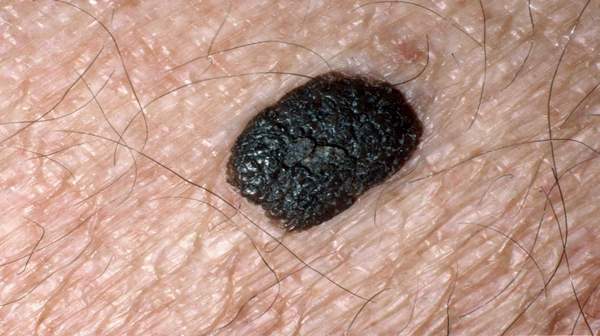What are seborrhoeic keratoses?
Seborrhoeic keratoses are also known as seborrhoeic warts, and as basal cell papillomas. The term ‘senile wart’ has now been dropped as it caused offence and because they are not only seen in the elderly, but also in other age groups. Seborrhoeic keratoses are very common harmless, often pigmented, growths on the skin.
What are the symptoms of seborrhoeic keratoses?
Seborrhoeic keratoses are harmless, but are often considered to be a nuisance. They can itch, become inflamed, and catch on clothing. Many people dislike the look of them, particularly when they occur on the face.
Symptoms are skin growths that:
- Are located on the face, chest, shoulders, back, or other areas
- Are painless, but may become irritated and itch
- Are most often tan, brown, or black
- Have a slightly raised, flat surface
- May have a rough texture (like a wart)
- Often have a waxy surface
- Are round or oval in shape
- May look “pasted-on”
- Often appear in clusters
What causes seborrhoeic keratoses?
Despite their name, seborrhoeic keratoses are nothing to do with sebaceous glands or viral warts:
- They are benign growths due to a build up of ordinary skin cells.
- They usually start to appear after the age of 40 years, although they can appear in younger people.
- The majority of older people will have a few seborrhoeic keratoses, while some will have large numbers.
- They are not infectious and do not become malignant.
Are seborrhoeic keratoses hereditary?
No, however the tendency to have a higher number of seborrhoeic keratoses can run in families. For example, if your father or mother had many seborrhoeic keratoses, you are more likely to have an increased number.
Can seborrhoeic keratoses be cured?
Individual seborrhoeic keratoses can be treated successfully in the ways listed below. However, new seborrhoeic keratoses will continue to appear.
How can seborrhoeic keratoses be treated?
As seborrhoeic keratoses are so common (most people after middle age having at least a few) it would be impossible to routinely treat every individual and every single keratosis. Most need no treatment anyway as they are harmless and cause no symptoms, however for those who wish to have some or all of their keratoses removed it may be possible to have them treated by a general practitioner or dermatologist. Treatment can occur by either freezing them with liquid nitrogen (cryotherapy), or scraping them off (curettage) under a local anaesthetic.
Such treatments may not be funded by the local NHS service. A further drawback is that these procedures may cause altered pigmentation or scarring of the treated skin; thus they are usually restricted to seborrhoeic keratoses that are persistently troublesome.
What do seborrhoeic keratoses look like?
Seborrhoeic keratoses have a rough surface, and range in colour from golden brown to mid brown to almost black. They can affect anyone, but on dark- skinned people they can also appear as multiple small dark brown or black bumps, especially on the face and the neck; in such a case this is called Dermatosis Papulosa Nigra.
Small flat seborrhoeic keratoses can often become more raised and larger as the years go by. Their size varies from less than one centimetre to several centimetres across. They give the impression that they are stuck onto the surface of the skin; however some look like small pigmented skin tags.
Seborrhoeic keratoses occur most often on the trunk, but they are also common on the head and neck. Their numbers vary, and one person may have just one seborrhoeic keratosis whilst others can have hundreds. Once present, they usually stay, and new ones often appear over the years.










